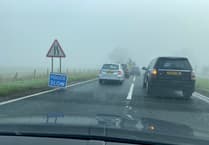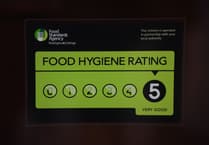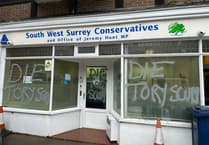An interesting item from Jane Hurst of Alton this week about Chawton Park Farm, the possible site for a 1,200-home development, and its connection with Jane Austen and the latter’s concern for the farmer there in the early years of the 19th century.
As Mrs Hurst points out: “It shows Jane Austen did know the area and one wonders what she would have thought about the plans for the land.
“On Sunday, November 26, 1815, Jane Austen wrote to her sister Cassandra: ‘Poor Farmer Andrews! I am sorry for him, and sincerely wish his recovery.’
“ ‘Poor Farmer [John] Andrews’ was a member of a family who came from the neighbouring village of Medstead and who had occupied New Park Farm (also called Chawton Lower Park Farm or Chawton Park Farm) since the 1750s. At that time, the farm was about 100 years old, having been made out of the lower part of the larger of two medieval Chawton hunting parks which belonged to the Knight family.
“John Andrews had married in 1786 but, after the birth of two daughters, his young wife died.
“A year later, in 1796, John married again and a third daughter was born. In October 1809, the family had some visitors. Fanny Austen/Knight, daughter of Jane’s brother Edward, wrote in her diary on Tuesday, October 22: ‘Aunts C[assandra] & J[ane] Charles & I walked to New Park Farm.’
“Fanny was aged about 16 and the Andrews girls were Elizabeth, aged 18, and Ann, aged eight. Their older sister, 21-year old Sarah Andrews, had already married and left home. The walk to Chawton Park Farm would not have been the only time the Austens would have met Farmer Andrews as John took an active part in village affairs, holding the posts of church warden and ‘overseer of the poor’.
“On November 26, 1815, John must have been ill as that was when Jane wrote her comment about ‘Poor Farmer Andrews!’
“Aged 54, he was to survive another year, being buried in Medstead on November 6, 1816. The estate accounts of Jane’s brother Edward were kept by the Trimmers, attorneys of Alton, and they show the tenancy of Chawton Park Farm was kept on by John’s representatives for another year while his estate was settled.
“As there was no son to carry on the business, the buildings were repaired with the work being done by William Gold (a local mason), James Clinker (the blacksmith who was next door to the Austens), and William Jones of Farringdon (a carpenter).
“Farmer Andrews’ widow, Mary, was paid ‘£36 for straw and £318 for sanfoin (a perennial legume that thrives on chalky soils) left on Chawton Park New Farm’ and the farm was leased to James Windibank. Mary moved to Medstead where she died in 1820, aged 61.”
Jane’s photograph shows Chawton Park Farm later in the 19th century, still looking very peaceful which is something that will definitely change if the contents of the EHDC Local Plan come to fruition.




